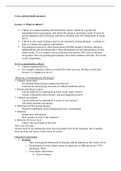Summary
Samenvatting Corporate Communication J. Cornelissen (6th edition) - A guide to Theory and Practice
- Course
- Institution
- Book
Volledige samenvatting van het boek Corporate Communication - A guide to Theory and Practice van Cornelissen, J. (6th edition) Samenvatting is in het Engels!
[Show more]













